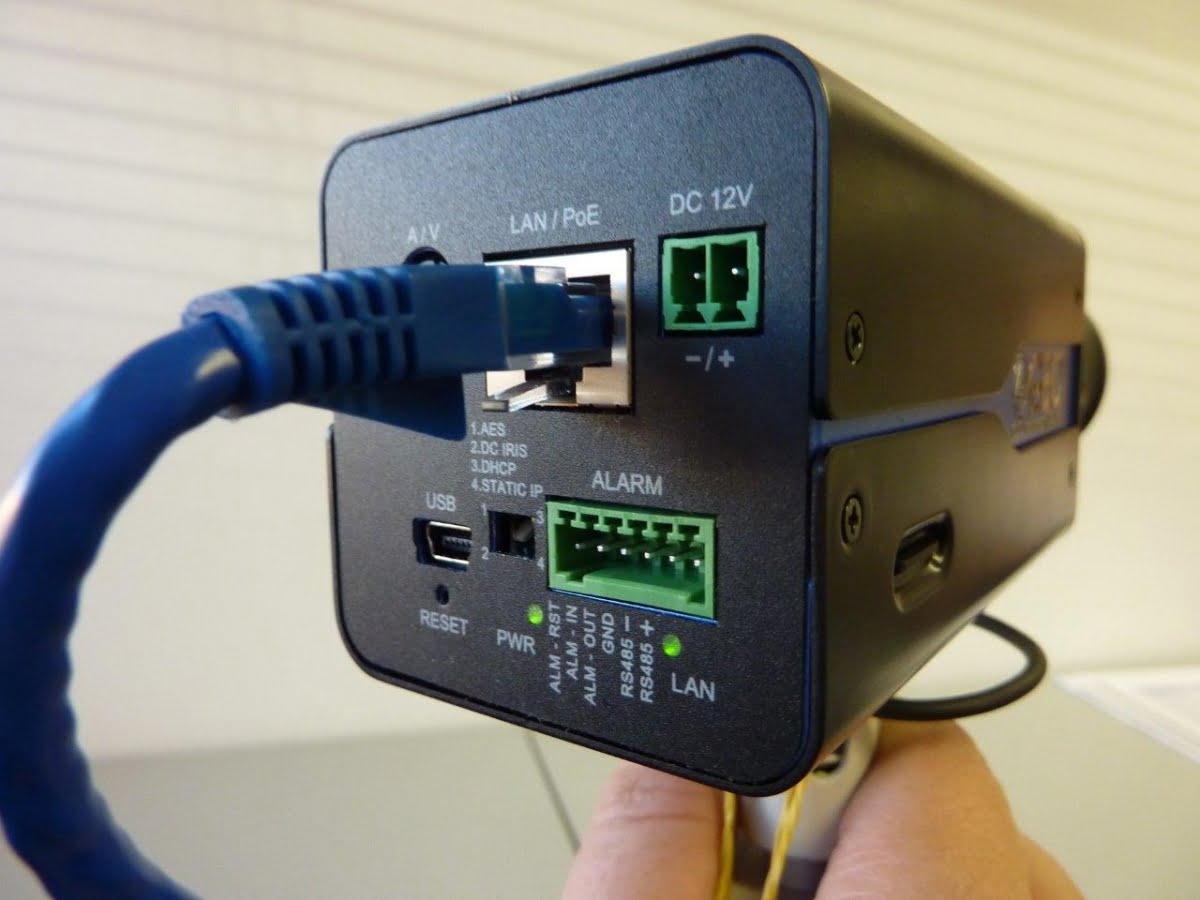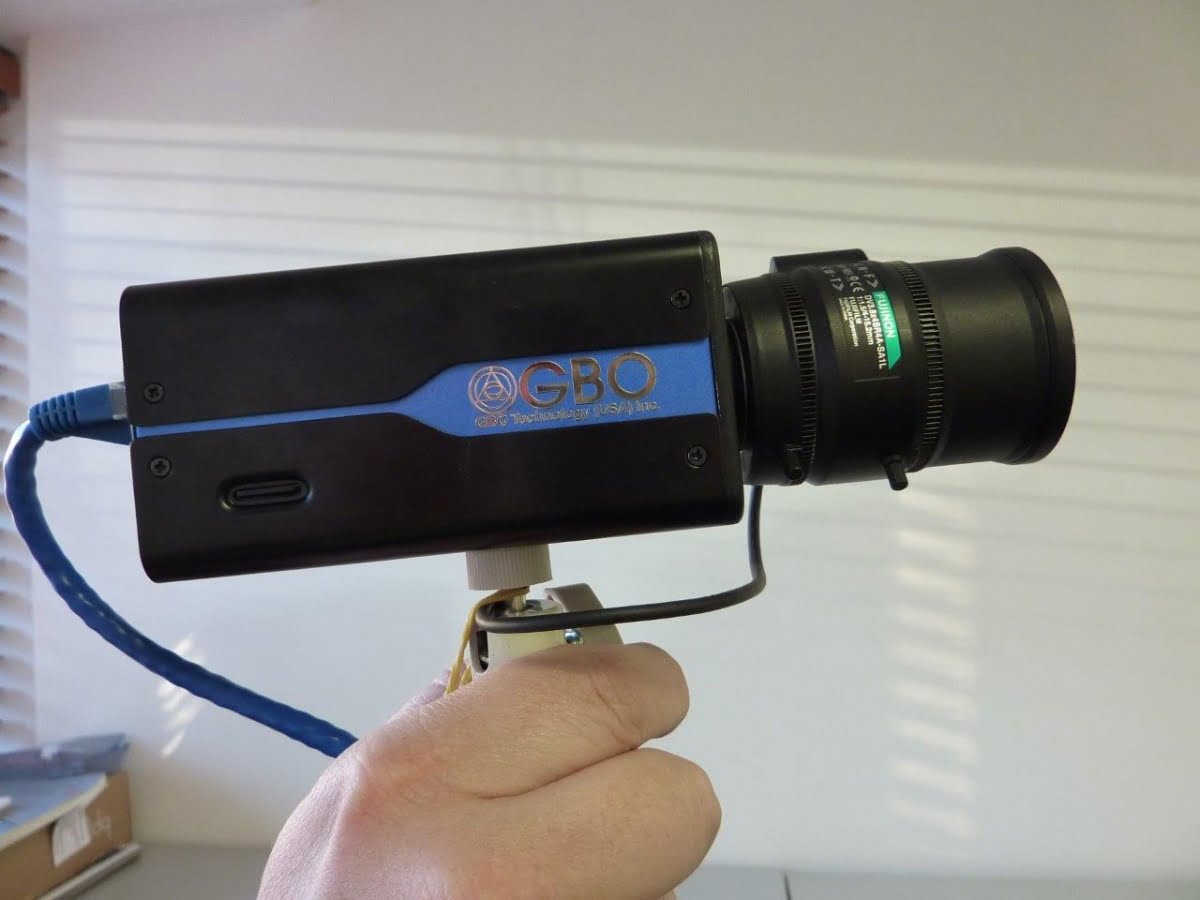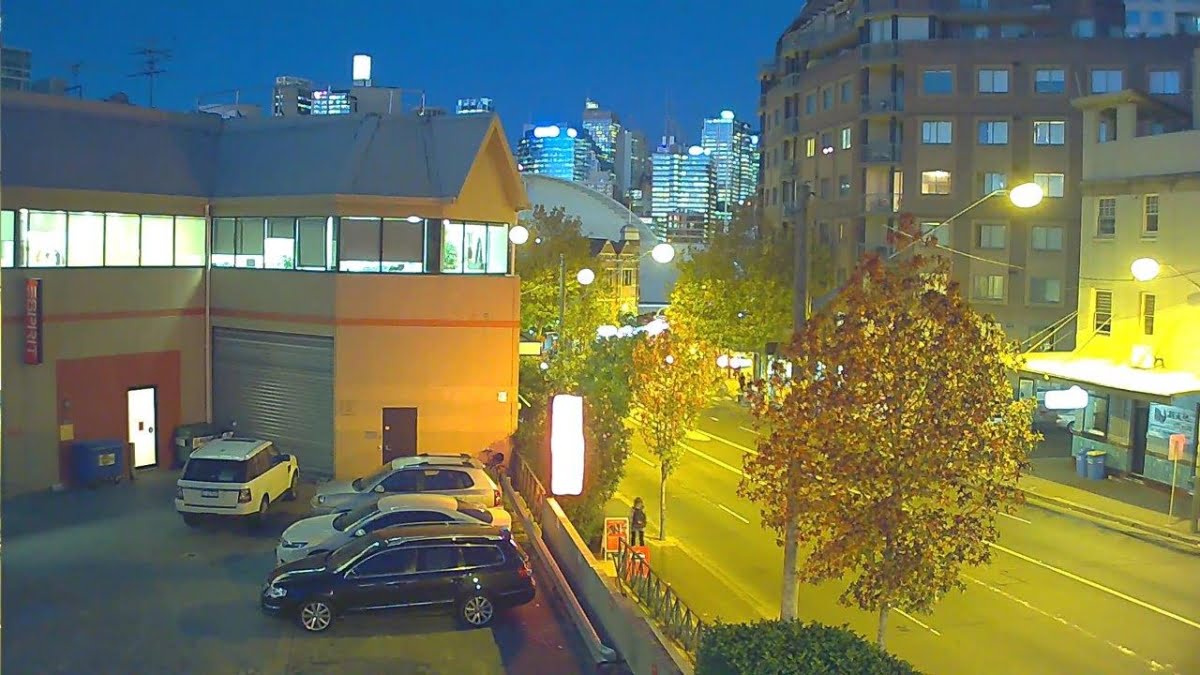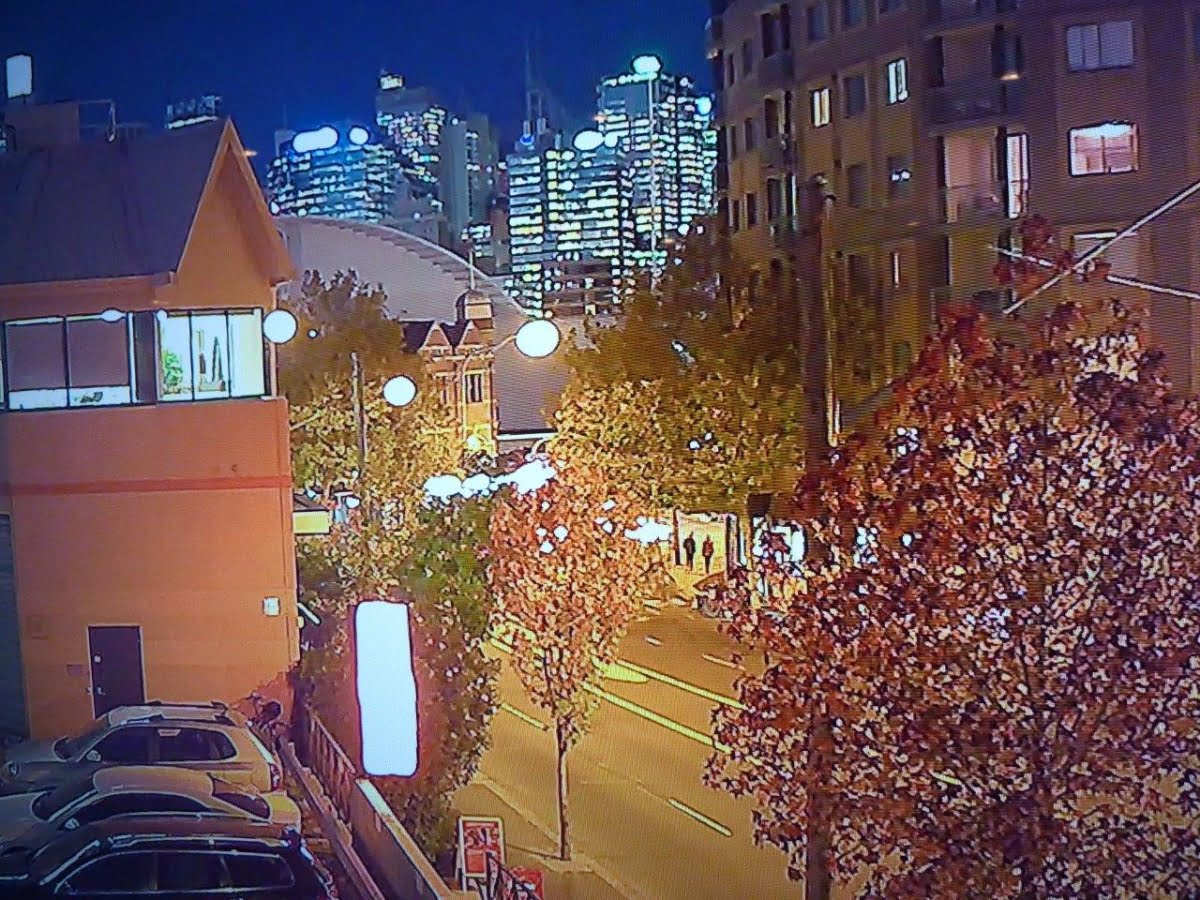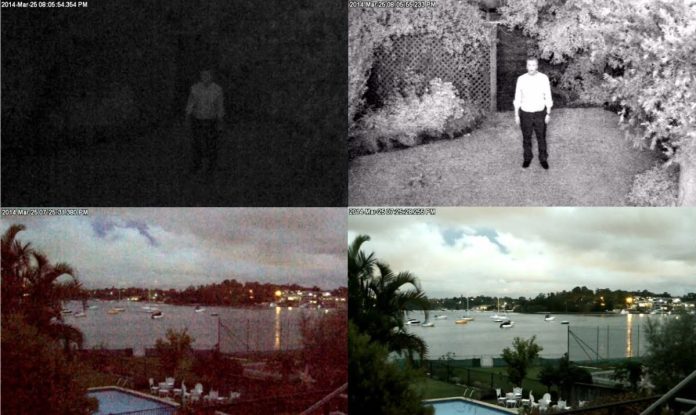WE know GBO produces cracking lens technology but what’s not so well known is that the company is now manufacturing CCTV cameras. In true GBO style these units aren’t clones of the competition but leverage GBO’s inherent strengths in optical science to offer users what the company is calling an ultra low light camera.
Just for the record, I didn’t test the camera in ultra low light – I assume this means sub 1 lux – but I did see demo images comparing it to quality competition in very low light. The results suggested GBO has made a fine camera that deserves serious attention from those needing strong performance in very tough lighting conditions.
The conditions in which I viewed the camera were dusk into night time in central Sydney with ambient street lights and vehicle headlights providing support. Performance in these conditions was surprising. When compared against really good competition (no, I’m not going to name names but trust me), the results were very impressive indeed.
Worth pointing out upfront is that the GBO S1080 is an engineer’s solution to some extent. On the upside of this raw channel to propeller-heads, you can have the manufacturer’s boffins tweak a set of cameras for your given application.
As well as describing its camera as ultra low light, GBO also claims the S1080 is ultra low noise and this is a claim I can verify, though I do this on the strength of naked eye. The S1080 has the lowest noise I think I’ve seen in a camera operating under 10 lux. It was a shame not to see the camera operating in sub 2.5 lux, but I think the demo images support what I saw on test day adequately.
The particulars of the unit include things like PoE, 1080p resolution at 1920 x 1080, configurable to stream H.264, MPEG-4 and Motion JPEG at 30fps simultaneously. There’s an onboard SD/SDHC memory card slot with a 16G card included. There’s also analytics and these include video motion detection and a tamper alarm. Ports include RJ-45, RS 485, an alarm input, output and reset, and a 3.5 mm audio line I/O and a video monitor out. All this is straightforward enough. What is different is the camera’s 1-inch image sensor whose bigger pixel lenses absorb far more light.
Rear of the S1080
In a move I think defines the integrity of GBO as a manufacturer, the company has released 2 versions, one with a colour sensor and cut filter for Day/Night use and another with a straight-up monochrome sensor for best possible night performance. The progressive scan CMOS offers a 16-bit wide dynamic range in colour, RGB or monochrome models.
Unsurprisingly, GBO’s claimed minimum scene illumination numbers are strong – from just above to right down below the level of starlight. The minimum illumination with the colour sensor is claimed to be 0.0125 lux @ F1.0 for colour and 0.00125 lux @ F1.0 for black and white.
Using the monochrome sensor camera the numbers head off into the abyss – they’re 0.00075 lux @ F1.0. In both cases shutter times are selectable between 1/100,000 second to 0.5 second. Just for the record we are viewing the day/night model in this test.
The cameras are compatible with any C-mount 1-inch format lens and they support manual iris, DC iris or video iris. It goes without saying that 1-inch lenses are expensive so I should point out that the camera comes with a GBO lens at a fixed price. GBO lens options include the GBO 25mm F1.8 and the GBO 50mm F1.8. In this test we are using a Fujinon auto-iris lens.
When it comes to image settings you can adjust things like compression, color, brightness, sharpness, contrast, white balance, exposure control, and backlight compensation, as well as fine tuning of behaviour at low light. Exactly what this last adjustment capability means, I’m not entirely certain but it probably involves balancing those arch enemies, amplification and noise.
There’s also 2-way audio streaming, audio compression AAC LC 8/16 kHz, G.711 PCM 8kHz, audio input/output line input and line output. The temperature range for the camera unhoused is 0C to 55 C, while the humidity range is typical – between 20 per cent and 80 per cent RH (non-condensing). With the camera in a housing temperature range is very good, ranging between -30C and 55C with standard POE, and -40C to 50C with high POE (a heater).
According to Graham Clark, technical support manager (NSW), BGW Technologies, GBO is keen to get a foothold in the market and has priced the camera aggressively thanks to that bundled GBO lens.
“What the GBO S1080 does really well is deliver an incredibly sharp image in low light in colour,” Clark explains. “And when the camera switches to black and white it gives an image that has incredibly low noise.
“The camera has a powerful processor and multiple presets and adjustments that allow these qualities to be tweaked – that’s why you get such low noise in low light scenes.”
According to Clark, because it’s a new camera the BGWT team have it working on the ONSSI VMS in the control room via ONVIF. Clark tells me while it’s not a miracle camera, the S1080 does well in extreme low light compared to other cameras. The underlying reason for this is that big, 1-inch CMOS sensor. All other things being equal, a 1-inch chip will spoon up 2 thirds more light than a standard 1/3-inch chip can thanks to its bigger pixel sizes.
Before we head to the control room we take a look at a couple of demo shots. These were taken at a site with no light. It’s an external application showing a pathway with shrubs – a reasonably deep scene. The difference is apparent when compared to another quality Japanese camera. The GBO S1080 clearly shows the path and detail deeper in the scene, as well as a person walking on the path. The leading competitor is not showing much of anything at all.
“It’s a nice solution for what it does,” says Clark. “Because GBO are optical engineers – scientists – they are operating at another level. They will also tailor internal camera settings to suit an application.
“In fact we told the GBO guys we would be using the camera we are going to be looking at for low light and they tweaked it for that application.
“That’s a real attraction with these GBO cameras – they can be custom-adjusted by the GBO engineers to handle low light and fast moving objects in a scene.”
GBO side view
Test driving the S1080
With the specifications out of the way we head downstairs to the control room. It’s the perfect time to test a low light camera. Night is falling now – it’s after 5.00pm in Sydney and it’s getting dark. Outside I measure ambient light at 4EV – that’s 40 lux.
This is not meant to be a direct comparison test, not least because the GBO camera has been massaged to perform in low light. But it’s nevertheless instructive to compare the S1080’s performance to that of a couple of other top tier cameras.
“When you call up these cameras side by side you can see the difference in sharpness. There’s a reasonable amount of ambient light in this area and under these conditions the GBO camera functions really well while the other cameras are fuzzy and full of noise.”
We examine the scene. When you look at the GBO camera images you can see the lines in the brickwork in nearby buildings – that’s phenomenal. The sharpness of the image is great. We can see texture in the path and details of foliage. Colour rendition is very strong and it stays strong for the entire test period.
Depth of field is particularly good, given this is a 2.1MP 1080p camera using a standard lens. We can see passersby on the street, view activity on an opposite street corner and look a long way the way down the road in useful detail. Even with a standard wide angle lens it’s getting activity right down at the Pyrmont Bridge intersection 200m away. Something that’s particularly striking is the level of detail in city buildings 1000m away.
Our test camera is actually just resting on a filing cabinet inside the office and peeking out through the window. That means we are looking through a pane of glass and there’s some reflection from the fluorescent lights upstairs messing with our image. Simmons goes and turns the lights off and wow – now the performance is absolutely spectacular. The image is glowing bright, too.
I go outside to measure the light – now it’s 2.7 EV at 100 ISO – that’s about 15 lux – yet the camera is getting rich colour. It’s an impressive performance, as the attached images attest. The other cameras are now really starting to battle with the low light – one has suddenly gone blocky and noise snow is starting to fall.
GBO camera in 8 lux – bear in mind this is a 150-odd pixel version of a 1080p still – the full res image simply pops. Thanks to that big sensor there’s no need for a snail-paced shutter speed or hyperactive ISO settings and that means very little motion blur and the noise levels compared to the competition were non existent.
Hell, that’s a good camera, I say to the boys and they explode into laughter.
“When we first starting looking at this we were being quite standoffish with GBO,” says Clark. “Plenty of manufacturers want us to distribute their stuff. It wasn’t until we tested the camera that we realised what we had – real wow factor. It’s such an impressive image.”
I test the light on the street again – it’s 1.7 EV, around 8 lux and it stays at this level for the rest of the test. That’s not a lot of light for a camera to work with but it’s fairly typical for a street application like this one. Given the amount of light available the S1080 is doing a solid job. Looking at the 4-camera comparison on the monitor in front of us, the GBO camera looks like its images have been recorded at a completely different time of day. Clark takes a series of screen grabs at 8 lux to illustrate the point.
The carpark is the most challenging view at BGWT so Clark carts the GBO across the office and points it out the window to match a couple of externally mounted camera views. Performance is distinctly superior – there’s detail and sharpness and lack of noise. It’s still the only camera that has stayed in colour. Even the darker parts of the scene are relatively bright – and the GBO is getting into shadows and registering flinty detail at surprising distances. After the demo I go around into the carpark and measure light again at 0.3 EV – around 4 lux. That’s getting low.
“One of the things we’ve talked about with this GBO camera is applications like prisons where low light performance in colour is really important,” Simmons tells me.
“It’s great having excellent monochrome performance but when you have inmates wearing green and cleaners wearing blue, it’s impossible to tell the difference. For applications where this sort of detail is important, in my opinion this camera is one of the best in the business.”
Judging cameras with the naked eye is not an easy thing to do and there are 2 or 3 really good low light cameras on the market today it would be great to see stacked up against the GBO S1080. Something else that’s hard to do is compare subjective camera tests in completely different locations and applications. Needless to say, in an application like this one, I’ve not seen a camera do better.
By John Adams
The same scene at 8 lux with zoom – again, this image is a 150Kb version of the original 1080p still
Features of the GBO S1080
* Includes GBO lens
* 1-inch progressive scan CMOS sensor
* Full HD – 2.1 Megapixel 1080 HD (1920 x 1080)
* Low light in color: 0.0125 lux, F1.0
* Low light B/W: 0.00125 lux
* Wide Dynamic Range
* Compression: H.264, MPEG-4 and Motion JPEG
* Memory: SD/SDHC memory card slot (16G included)
* ONVIF compliant (Profile S).
“The camera has a powerful processor and multiple presets and adjustments that allow these qualities to be tweaked – that’s why you get such low noise in low light scenes”
